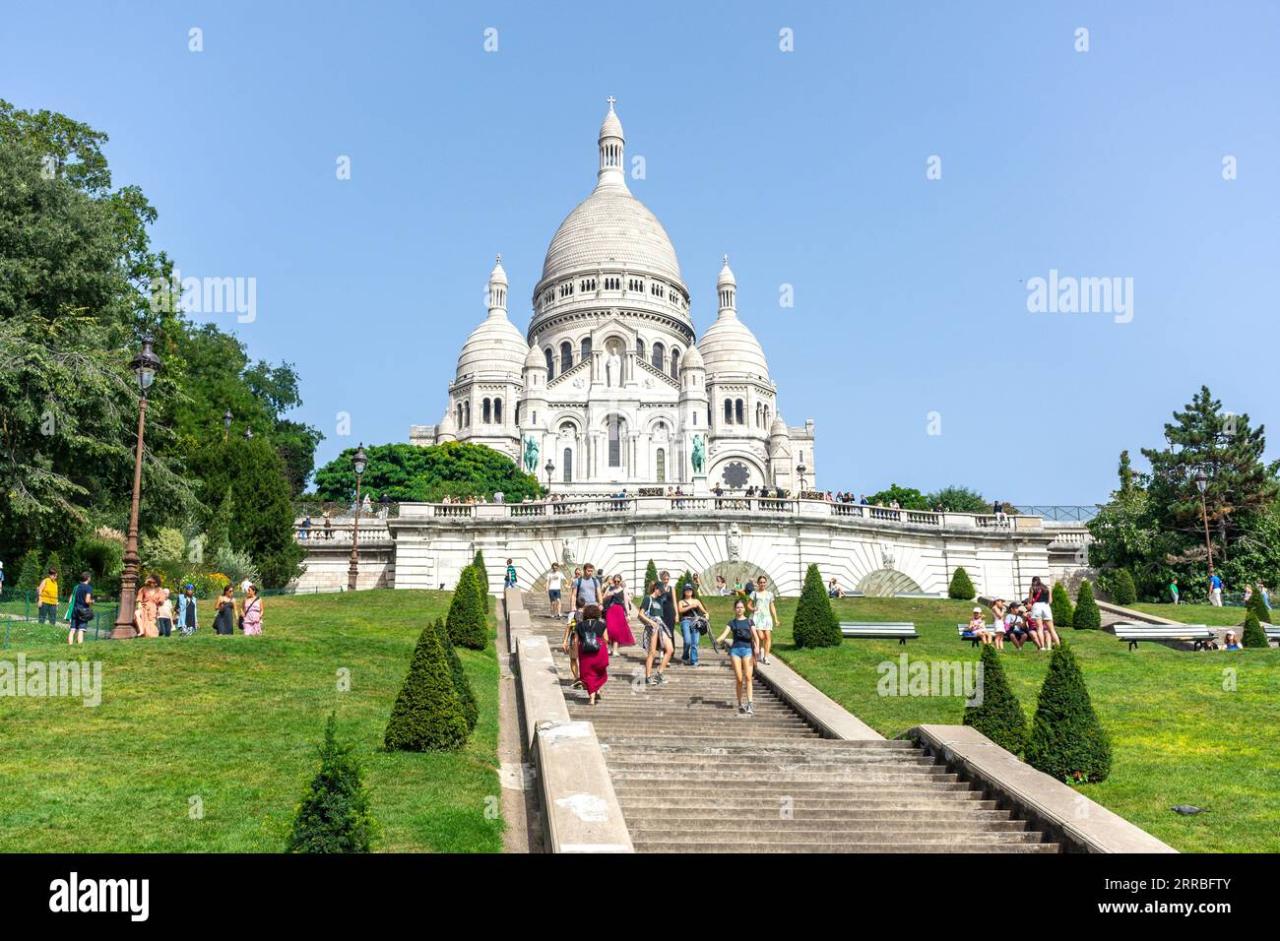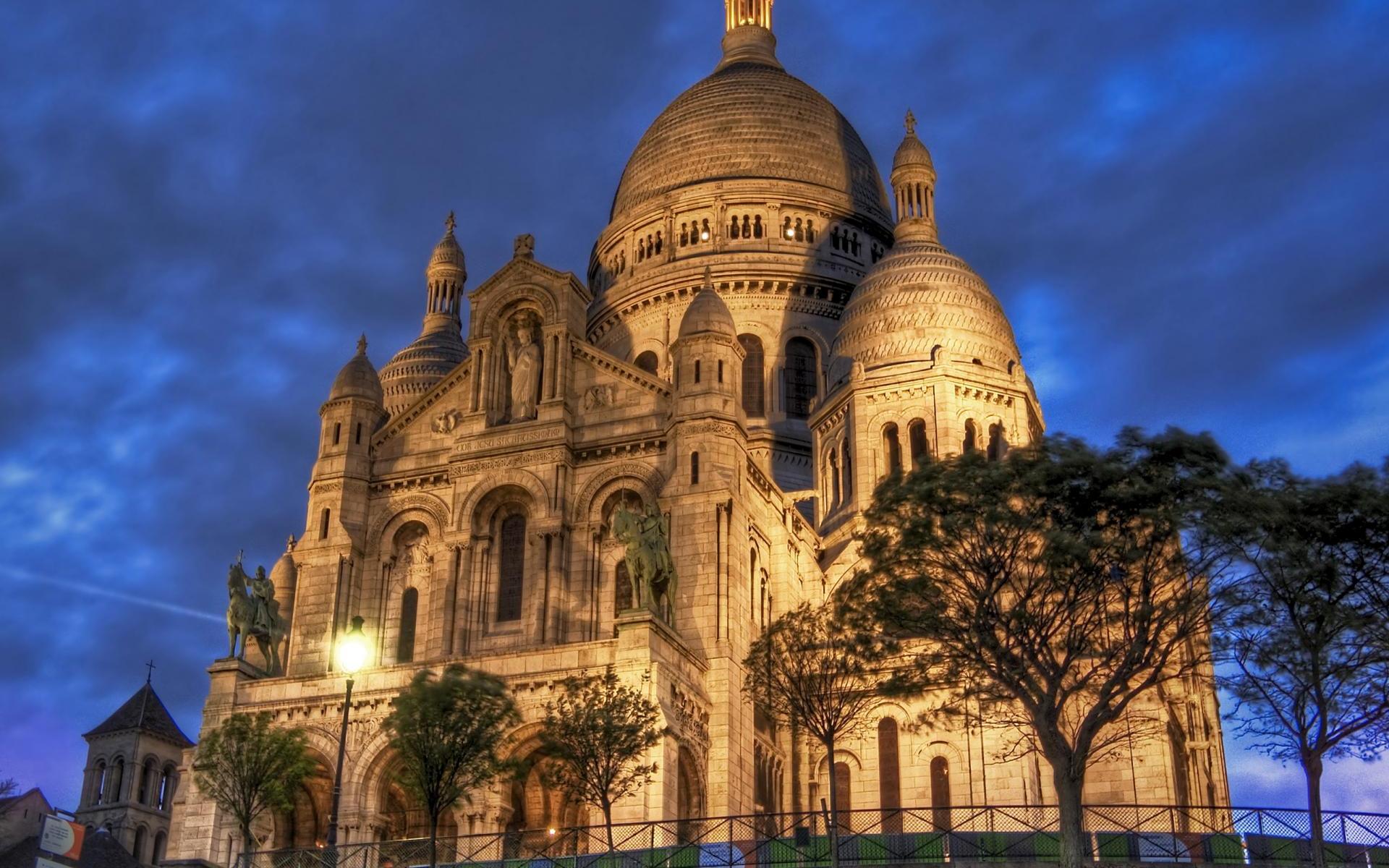The Basilica of Sacré-Cœur: Meaning, History, and Enduring Symbolism
The Basilique du Sacré-Cœur, perched atop the butte of Montmartre in Paris, is more than just a stunning architectural landmark. Its gleaming white silhouette, visible from across the city, represents a complex tapestry of religious devotion, national penance, and political maneuvering. Understanding the meaning behind the Sacré-Cœur requires delving into the tumultuous period of French history that birthed it, examining its architectural symbolism, and appreciating its enduring role as a place of pilgrimage and spiritual reflection.
A Vow Born of National Trauma
The genesis of the Sacré-Cœur lies in the aftermath of the Franco-Prussian War (1870-1871), a devastating conflict that saw France defeated and Paris besieged. The war culminated in the bloody Paris Commune, a radical socialist government that seized control of the city for a brief but brutal period. This period of intense social and political upheaval left France deeply wounded and searching for answers.
Amidst this national trauma, two prominent figures, Alexandre Legentil and Hubert Rohault de Fleury, made a solemn vow. They attributed France’s misfortunes to a spiritual decline and believed that the nation’s salvation lay in a return to religious devotion. They proposed the construction of a church dedicated to the Sacred Heart of Jesus (Sacré-Cœur in French), a symbol of divine love and compassion, as an act of expiation for the sins of the nation and a plea for divine forgiveness.
This vow resonated with many Catholics who saw the war and the Commune as divine punishment for France’s secularism and moral failings. The idea of building a basilica dedicated to the Sacred Heart gained momentum, fueled by a desire for national reconciliation and spiritual renewal.
Political Undertones and Controversy
While the Sacré-Cœur was presented as a purely religious undertaking, it was inextricably linked to the political climate of the time. The conservative and Catholic elements of French society saw the basilica as a way to reassert traditional values and restore the moral order they believed had been undermined by the rise of republicanism and secularism.
The choice of Montmartre as the site for the basilica was also laden with symbolism. Montmartre, traditionally a working-class neighborhood with a history of radicalism, was also the site where the Paris Commune began. Building the Sacré-Cœur on this ground was interpreted by some as a symbolic act of cleansing and a triumph of conservative values over the revolutionary spirit of the Commune.
This political dimension sparked considerable controversy. Republicans and secularists viewed the Sacré-Cœur as a symbol of reactionary politics and a monument to national guilt. They argued that it represented an attempt to impose a particular religious and political ideology on the entire nation.
Despite the controversy, the National Assembly officially approved the project in 1873, declaring it a matter of national importance. This decision ensured the basilica’s construction, but the debates surrounding its purpose and meaning continued for decades.
Architectural Symbolism: A Blend of Styles and Meanings
The Sacré-Cœur’s architecture is a unique blend of Romanesque and Byzantine styles, consciously chosen to evoke a sense of spiritual grandeur and timelessness. Architect Paul Abadie, selected through a competition, drew inspiration from churches in Venice and Périgueux, creating a design that is both imposing and ethereal.
-
The White Stone: The basilica is constructed from Château-Landon stone, a type of travertine that hardens and bleaches white over time when exposed to rainwater. This self-cleaning property ensures that the Sacré-Cœur retains its gleaming white appearance, symbolizing purity, spiritual light, and the immaculate nature of the Sacred Heart.
-
The Dome: The basilica’s most prominent feature is its large central dome, which dominates the Parisian skyline. The dome represents the universality of the Catholic Church and the all-encompassing love of the Sacred Heart. Visitors can climb to the top of the dome for panoramic views of Paris, reinforcing the idea of the Sacré-Cœur as a spiritual beacon overlooking the city.
-
The Mosaic: Inside the basilica, above the altar, is one of the world’s largest mosaics, titled "Christ in Majesty." This massive artwork depicts Jesus Christ with outstretched arms, offering his heart to humanity. The mosaic reinforces the central theme of the Sacré-Cœur: the boundless love and compassion of Jesus.
-
The Crypt: Beneath the basilica lies a vast crypt, which mirrors the layout of the church above. The crypt contains statues of various saints and serves as a place for quiet contemplation and prayer.
-
The Bell Tower: The Sacré-Cœur houses the "Savoyarde," one of the world’s heaviest church bells. Its deep, resonant sound is a powerful reminder of the basilica’s religious purpose and its role as a place of worship.
A Place of Pilgrimage and Perpetual Adoration
From its completion in 1914 to the present day, the Sacré-Cœur has served as a major pilgrimage site and a place of perpetual adoration. The practice of perpetual adoration, where the Eucharist is continuously exposed for veneration, reflects the desire to offer constant prayer and reparation to the Sacred Heart of Jesus.
Pilgrims from around the world visit the Sacré-Cœur to pray, attend Mass, and seek spiritual solace. The basilica’s location on Montmartre, with its stunning views and artistic atmosphere, adds to its allure as a place of reflection and inspiration.
Enduring Legacy and Interpretation
The meaning of the Sacré-Cœur continues to be debated and reinterpreted in the 21st century. While its origins are rooted in a specific historical context, the basilica has evolved into a symbol with multiple layers of meaning.
For some, it remains a powerful symbol of Catholic faith and a reminder of the importance of spiritual values. For others, it is a monument to national reconciliation and a testament to the enduring power of hope. Still others view it as a controversial symbol of political and religious conservatism.
Regardless of individual interpretations, the Basilique du Sacré-Cœur de Montmartre stands as a significant landmark in the Parisian landscape and a powerful reminder of the complex interplay between religion, politics, and national identity. Its enduring presence continues to inspire awe, provoke debate, and invite reflection on the deeper meaning of faith and history. The Basilica is not simply a building; it is a living testament to the struggles and aspirations of a nation grappling with its past and its future. Its gleaming white facade serves as a constant reminder of the enduring power of faith, hope, and the search for meaning in a world often marked by conflict and uncertainty.


